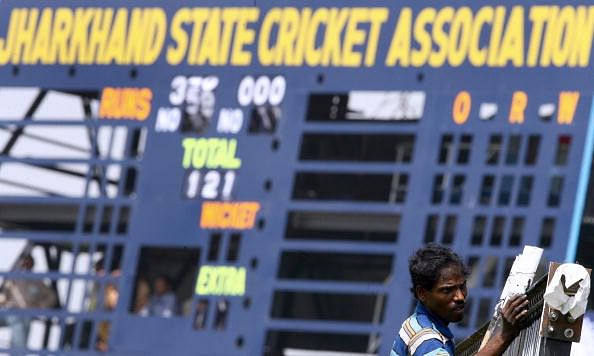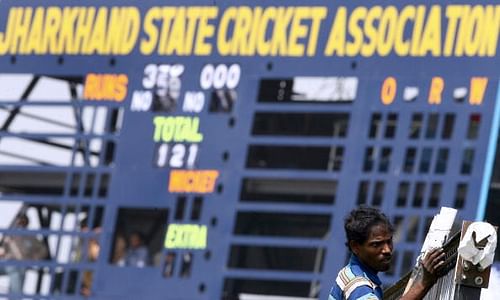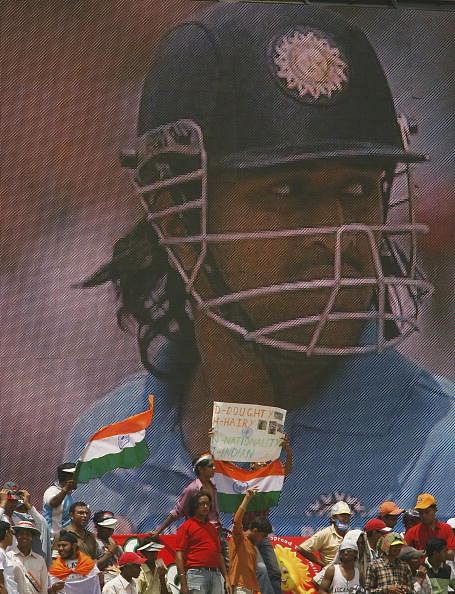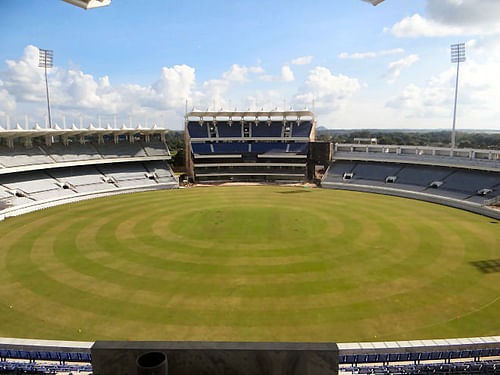
A small step for cricket; a giant step for Jharkhand

In 1939, the first stadium was built in what is now the erstwhile Bihar. Built at the princely cost of twenty five thousand rupees against the backdrop of the Dalma Hills and the Tata Steel factories, the stadium was named after John Keenan, a former Tata Steel GM. The Keenan had to wait almost half a century before getting its first international match – an India-England ODI IN 1983-84. Incidentally, it was one of the first venues in India to host an ODI, ahead of the likes of Eden Gardens and the Chepauk.
The last time two international teams played here, England beat India for the only time in the ODI series that was being played out, despite an innings-rescuing 96 as an opener by the local favourite MS Dhoni. India had still not played out their disastrous and subsequently ecstatic World Cup campaigns, the Big Four of Indian cricket were still playing and Dhoni was the hottest thing in Indian cricket both in terms of talent and good looks. More importantly, he was the first player from the state of Jharkhand to have made it that big.

Much water has flowed through the Subarnarekha since then. India have risen to, and then fallen from, the dizzying heights of the summit of the cricketing world. Saurabh Tiwary and Varun Aaron have joined MS Dhoni and then dropped out of the ranks, thanks to poor form or injury. India enter the new year seeking for a bit of freshness to revive their campaign.
And freshness is what will greet them on the 19th of January, as India hosts England in the first ever match at the HEC International Stadium at Ranchi. The stadium is as virgin as it can get – not even a single first class match or List A game has been played here. But that hasn’t stopped the ICC from giving it a thumbs-up for the ODI, making it a first of sorts for this picturesque stadium.
It is to the credit of the Jharkhand State Cricket Association that they have managed to finish a Rs. 180 crore project within Rs 150 crore. There have been trade-offs (the initial area of 35 acres has been slightly reduced to 32.5, and the launch has been delayed by a year) but the outcome is more important – bringing international cricket where it matters the most. The easy accessibility to watching live cricket has devalued its merit in the metros to an extent, but the passion still surges through the smaller centres which has provided the country some of its best players since the Sourav Ganguly era. And this is why it is heartening to see international matches being played in venues such as Ranchi and Dharamsala.
The state-of-the art venue is, along with the Sahara Stadium in Pune, one of the best cricket stadiums in the country. Its 35,000 seating capacity is a far cry to the 19,000 strong Keenan. Additionally, it has the facility of floodlights – still a rarity in quite a few of the smaller venues in India. An elegant structure consisting of steel braces and membrane roofs ensure that no shadow falls on any of the nine pitches before 4:45 pm at any time during the year. The scenic Hatia dam, Jagannath Temple and a couple of nearby hills add to the viewing pleasure on television or otherwise. The search for the next Dhoni is already on – a world-class indoor cricket academy with residential accommodation for youth training schemes has already been put into place. Add to that tennis and basketball courts, a swimming pool and a spa and you know the organisers mean business.
But then, nothing is more important than the match. The third match of a five match ODI series is generally the most crucial – it either closes out the series if a team has won both of the previous matches, or if the scores are tied at 1-1, it helps a team take a crucial one match lead, leaving the opponents with the uphill task of coming from behind and winning all of the matches left to claim series. Either way, India at home versus the current number one ODI team in the world will make for very interesting viewing.

No matter what the outcome is, this would be a big fillip to cricket and sport in general in Jharkhand. Jharkhand has always provided India with some of its best sportsmen – the most memorable is a forgotten hero. Jaipal Singh Munda, who led the likes of Dhyan Chand to India’s first Olympic gold medal in a sport where the country would go on to bully the rest of the world till Astroturf caught up with them – hockey. He has been felicitated with a stadium being named after him in the 2010 National Games, but the knowledge of this has been limited mostly to locals. Maybe, as the camera veers over the city and its whereabouts during the ODI, the cricket-crazy Indian public will get to know a bit more about a few of its hockey heroes like Jaipal, or even Silveneus Dung Dung, Michael Kindo, Manohar Topno, Vimal Lakra, Sumrai Tete, Masira Surin, Kanti Ba and Adeline Kerketta.
But things are far from despondent. Yuwa (led by Franz Gastler who made a stirring speech in the inaugural TEDx IIM Ranchi) is providing a platform for young Jharkhandi women to be the change they want to see through team sports like football. Tata Steel has been proactive in promoting traditional Jharkhandi sports like Sekkor through its Tribal Cultural Society (TCS). Jharkhand has the infrastructure for (and hence dominates) amateur sports like Lawn Bowls – they swept all the eight titles in the National Lawn Bowls Championship in Delhi recently. Water sports is coming up in a big way in the form of adventure tourism, inviting thrill-seekers from all parts of the country and beyond. Pratima Kumari (wrestling) and Deepika Kumari (archery) are household names now. Jharkhand dominates the athletics events and hockey in the National Rural Games.
And cricket too is taking a step forward. As the Kolkata Knight Riders add the HEC International Stadium to their list of home venues, the Jharkhand Sports Academy is already ready for the IPL mania with its version – the Champions League Under-14 and Under-16 Cricket. The Ranji team has already produced a stunning turnaround this season by qualifying for the knockouts with an outright victory over Services in their last match two seasons after they won the Vijay Hazare Trophy (National One-Day meet). Clearly, it is not long before the likes of Shahbaz Nadeem make the transition to the national arena – and they will have the able support of the JSCA behind them when they do.